Disclosure: This article contains affiliate links. We may earn a commission from purchases at no extra cost to you, which helps our travel content.
The moment our ferry pulled into La Digue's harbor, my daughter Zoe's eyes widened with wonder. 'Dad, where are all the cars?' she whispered. That simple question captured the magic of this Seychellois island perfectly. After years of navigating tech startups and e-commerce platforms, I've discovered that sometimes the most revolutionary experiences come from stepping backward in time. La Digue—a place where bicycles reign supreme and ox-carts still trundle along sandy paths—offers precisely this paradox: cutting-edge sustainability through old-world transportation. During our recent week-long adventure, we discovered that getting around car-free isn't just possible; it's the entire point. This guide shares everything my family learned about navigating this remarkable island, from renting the perfect bikes to knowing when an ox-cart ride isn't just novelty but necessity (especially when tropical rain makes an unexpected appearance during your beach picnic plans).
Getting to La Digue: The Journey Begins
La Digue doesn't have an airport, which is precisely what preserves its car-free charm. Your journey to this island paradise will always involve a ferry ride, creating a perfect transition from the modern world to island time.
From the main island of Mahé, you have two options: take a direct Cat Cocos ferry (about 90 minutes) or fly to Praslin first and then catch a shorter 15-minute ferry. With Zoe in tow, I opted for the direct route to minimize transitions, though the views from either journey are spectacular.
The Cat Cocos ferries run several times daily between Mahé and La Digue, with tickets costing around €60 for adults and €30 for children one-way. I highly recommend booking these in advance, especially during high season (June-September and December-January). The waterproof dry bag I brought proved invaluable during the occasionally splashy ride—keeping our passports, electronics, and travel documents bone dry.
As you approach La Digue, grab a seat on the port side of the ferry for your first glimpse of the island's famous granite formations and pristine beaches. The excitement of arriving somewhere that feels genuinely different from anywhere else is worth every minute of travel time.

💡 Pro Tips
- Book ferry tickets 1-2 weeks in advance during high season
- Take motion sickness tablets if you're prone to seasickness
- Sit on the port (left) side of the ferry when approaching La Digue for the best views
Bicycles: Your Primary Mode of Transport
If La Digue has a cultural emblem beyond its stunning beaches, it's the humble bicycle. Within minutes of stepping off the ferry, you'll notice locals and tourists alike pedaling everywhere. After five days of cycling the island with Zoe, I'm convinced it's not just transportation—it's transformation.
Bicycle rental shops cluster near the jetty, offering daily rates between 100-150 Seychellois Rupees (roughly $7-10 USD). While tempting to grab the first bikes you see, I recommend walking about 100 meters inland where prices drop and quality often improves. We rented from George's Bicycle Hire, where the owner personally adjusted seat heights and provided a child carrier for families with toddlers.
For families, bicycle options include:
- Standard adult bikes (most common)
- Children's bikes (limited availability, reserve ahead)
- Adult bikes with child seats (for kids under 5)
- Tandems (rare but available at select shops)
The island is relatively flat along the coastal road, but paths to interior attractions like Belle Vue can challenge younger riders. My collapsible water bottle proved essential during our rides—it saved space when empty and kept us hydrated in the tropical heat.
Most rentals include a basket and lock—use the latter religiously, even for quick stops. While crime is rare on La Digue, bicycles are valuable commodities here. Also, bring your own bike lights if planning evening rides, as most rental bikes don't include them.

💡 Pro Tips
- Inspect bikes carefully before renting (check brakes, tires, and chain)
- Negotiate a multi-day rate for longer stays
- Take photos of any existing damage before accepting the bicycle
The Iconic Ox-Carts: More Than Just Tourist Attractions
When I first saw the ox-carts of La Digue, I admittedly dismissed them as tourist gimmicks. By day three, when an afternoon downpour caught us halfway between L'Union Estate and our guesthouse, I quickly changed my mind. These traditional vehicles—essentially wooden platforms pulled by massive oxen—have transported people and goods around La Digue for generations.
Today, they serve two primary purposes: transporting visitors' luggage from the jetty to accommodations (particularly useful for families with multiple bags) and offering tours of the island. A standard luggage transport costs about 100-150 SCR ($7-10 USD), while tours range from 500-1000 SCR ($35-70 USD) depending on duration and route.
The ox-cart drivers double as informal guides, sharing island history and pointing out easily missed sights. Our driver, Marcel, showed Zoe how to identify breadfruit trees and explained how the island's granite formations were once believed to have healing properties.
While ox-carts move at a deliberate pace—about 3-4 mph—this slowness becomes a feature, not a bug. It forces you to notice details: the changing patterns of light through palm fronds, the symphony of birdsong, the scent of frangipani blossoms after rain.
For families, an ox-cart ride offers a welcome break from cycling, particularly during midday heat or sudden tropical showers. Just be aware that schedules are flexible at best—this is island time at its purest.
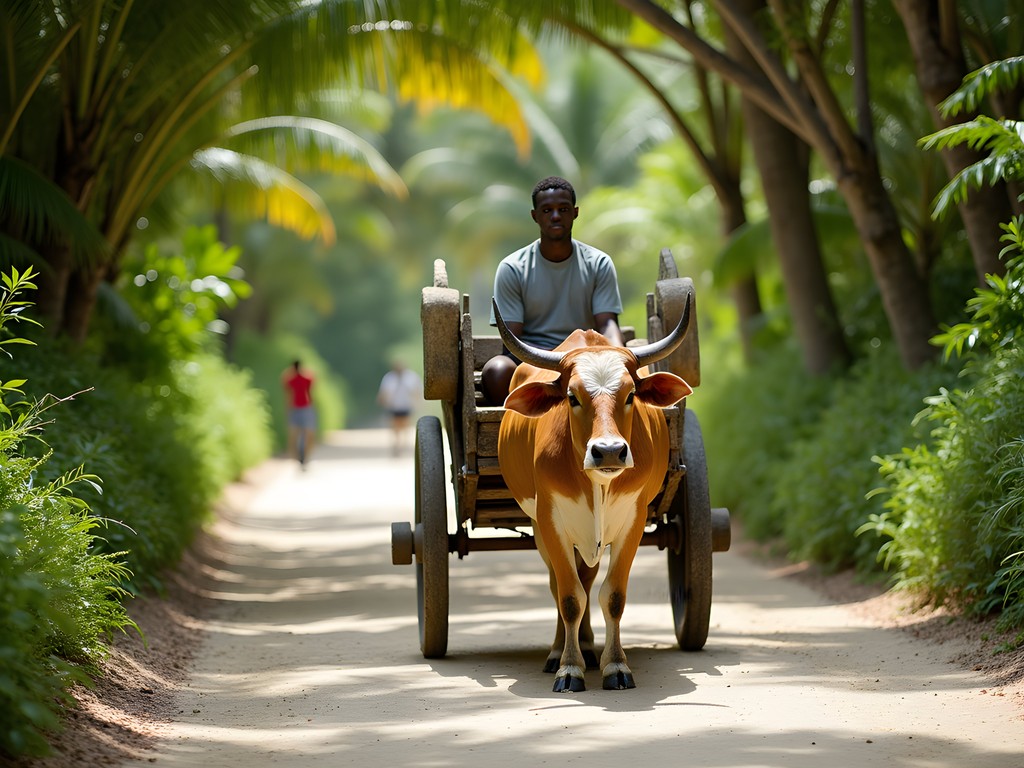
💡 Pro Tips
- Negotiate the price before boarding an ox-cart
- Bring small bills for payment as drivers rarely have change
- Schedule ox-cart tours in the morning when temperatures are cooler
Walking Trails: Discovering Hidden La Digue
While bicycles efficiently cover La Digue's 10 square kilometers, the island's soul reveals itself most fully on foot. Some of our most magical moments came during walks along trails too narrow or rugged for wheels.
The coastal path connecting the beaches of Grand Anse, Petit Anse, and Anse Cocos ranks among the most spectacular walks I've ever taken. The 30-minute trail winds through boulder fields and jungle patches, opening suddenly to reveal pristine beaches that feel worlds away from even the modest development elsewhere on the island. We encountered only three other hikers during our Tuesday morning journey.
For families with older children, the climb to Belle Vue (Eagle's Nest Mountain) rewards with panoramic views of the entire island and neighboring Praslin. The trail begins near the vanilla plantation and takes about 45-60 minutes each way. Bring plenty of water and start early to avoid midday heat.
During our hikes, my hiking sandals proved their worth repeatedly—providing grip on slippery granite while draining quickly after stream crossings. Zoe still talks about the moment we rounded a bend on the Anse Cocos trail to find ourselves face-to-face with a giant Aldabra tortoise ambling along the path.
For shorter walks, the trail through L'Union Estate offers glimpses into the island's plantation history, complete with a traditional copra mill (for processing coconuts) and a colonial-era plantation house. The entrance fee (100 SCR for adults, 50 SCR for children) also grants access to Anse Source d'Argent, possibly the most photographed beach in the world.

💡 Pro Tips
- Start hikes early in the morning to avoid midday heat
- Bring twice as much water as you think you'll need
- Wear closed-toe water shoes or hiking sandals for the coastal trails
Taxis and Transfers: The Few Motorized Options
Despite La Digue's car-free reputation, a handful of motorized vehicles do exist—primarily for goods transport and special circumstances. Understanding these options saved us during an unexpected thunderstorm that coincided with our departure day.
Pickup truck taxis operate with special permits, primarily serving as transfers between the jetty and accommodations for guests with luggage or mobility issues. These can be arranged through your accommodation (typically 150-200 SCR depending on distance) or found near the jetty upon arrival.
For our departure, our guesthouse arranged a pickup truck taxi when heavy rain made cycling with luggage impractical. The driver arrived precisely on time—a pleasant surprise given the generally relaxed island approach to schedules—and safely delivered us and our rain-soaked belongings to the ferry terminal.
A small fleet of electric golf carts also serves the island's few larger hotels and resorts. These aren't available for public hire but occasionally offer rides to stranded travelers during inclement weather—island hospitality at its finest.
Finally, emergency services maintain several vehicles, including an ambulance and police truck. In eight years of visits to La Digue, I've only seen these in motion twice—a testament to both the island's safety and the effectiveness of its largely car-free system.
If you have mobility concerns, contact your accommodation in advance to arrange appropriate transfers. Most are well-versed in assisting guests with special requirements despite the island's transportation limitations.

💡 Pro Tips
- Book departure transfers the day before leaving
- Keep your accommodation's phone number handy in case you need emergency transport
- Expect to pay cash for all taxi services
Family-Friendly Transportation Tips
Navigating La Digue with kids requires a slightly different approach than adult-only travel, but the rewards are immeasurable. Watching Zoe adapt to car-free living—initially frustrated by the slower pace but eventually embracing the freedom of safe, independent cycling—was worth every extra planning minute.
For families with young children (under 5), I recommend staying within walking distance of the main village area. Properties near La Passe or La Reunion offer the convenience of proximity to restaurants and services without sacrificing the island experience. We stayed at Villa Veuve, a 7-minute walk from the jetty, which proved ideal for quick access to everything while still feeling secluded.
Children aged 5-8 might struggle with full-sized bicycles on longer rides. Consider these alternatives:
- Bicycles with attached child seats (best for ages 2-5)
- Tag-along attachments that convert adult bikes into tandems (best for ages 4-7)
- Scheduling strategic ox-cart rides for longer journeys
For older kids and teens, having their own bicycles provides independence that they'll cherish. Just establish clear boundaries about where they can cycle alone.
Regardless of age, sun protection is non-negotiable when most transport happens outdoors. Our reef-safe sunscreen held up remarkably well through sweaty bike rides and ocean dips alike.
Finally, embrace the slower pace. What initially feels like an inconvenience—taking 20 minutes to cycle somewhere that would be a 3-minute drive elsewhere—becomes La Digue's greatest gift. Those 20 minutes contain countless butterfly sightings, impromptu conversations with locals, and the kind of unscheduled moments that become favorite family memories.
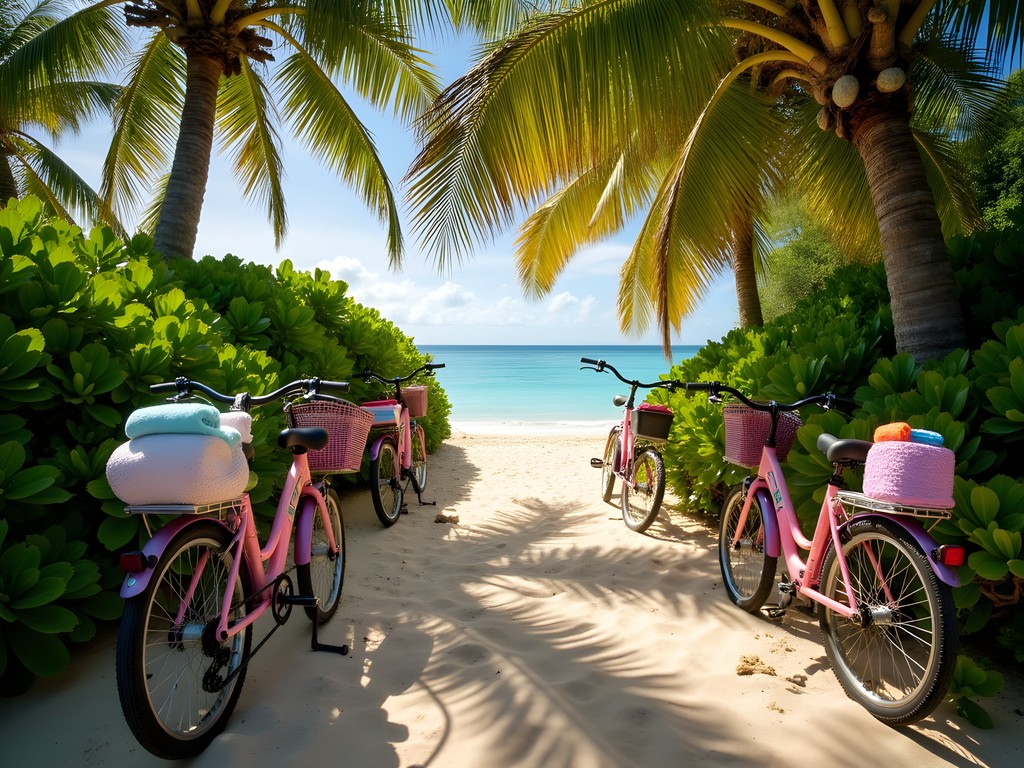
💡 Pro Tips
- Pack lightweight rain ponchos for unexpected showers while cycling
- Bring a small first aid kit for minor scrapes from cycling or hiking
- Schedule rest days between active exploration days, especially with younger children
Final Thoughts
As our ferry pulled away from La Digue's jetty, Zoe pressed her face against the window, watching the island recede. 'Dad,' she said thoughtfully, 'I didn't miss cars at all.' Neither did I. In a world increasingly defined by speed and convenience, La Digue's car-free paradise offers something more valuable: presence. When transportation becomes part of the journey rather than just the means to an end, you notice more, feel more, and connect more—with both the place and your travel companions. Whether you're cycling along palm-lined paths, swaying aboard an ox-cart, or hiking coastal trails between pristine beaches, La Digue's transportation options aren't limitations but invitations to experience the island as it's meant to be experienced: unhurried, unfiltered, and unforgettable. Pack your sense of adventure, embrace the slower pace, and discover why sometimes the best way to move forward is to step back in time.
✨ Key Takeaways
- Bicycles are the primary transportation mode and available for all ages
- Ox-carts provide both practical transport and cultural experiences
- Walking trails access parts of the island unreachable by other means
- Limited motorized options exist primarily for luggage transfers and emergencies
📋 Practical Information
Best Time to Visit
April-May and October-November (shoulder seasons)
Budget Estimate
$150-250 per day for a family of 3-4
Recommended Duration
4-7 days
Difficulty Level
Easy

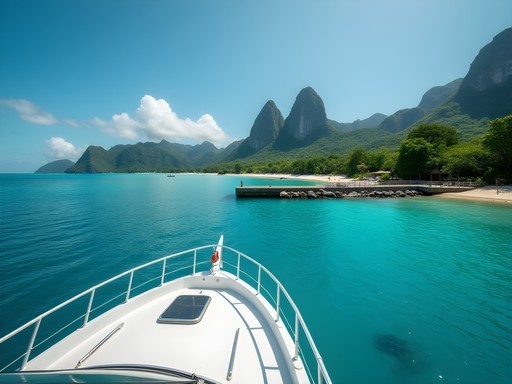

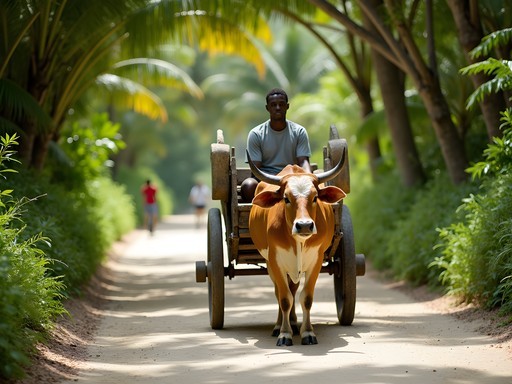

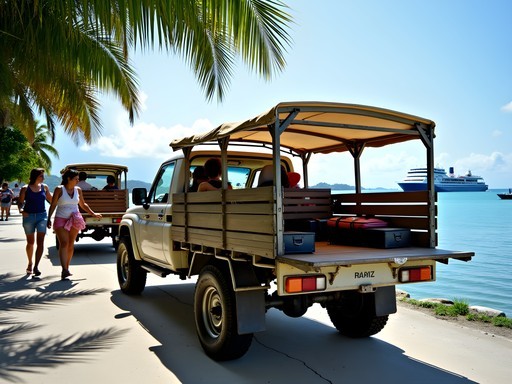



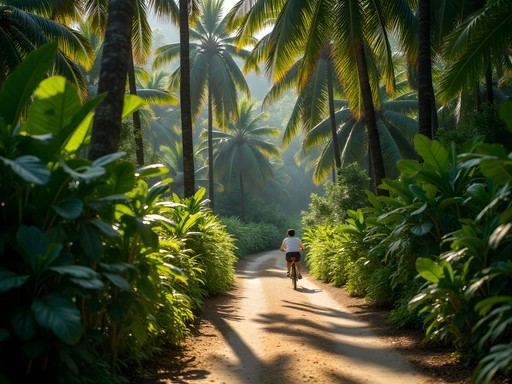
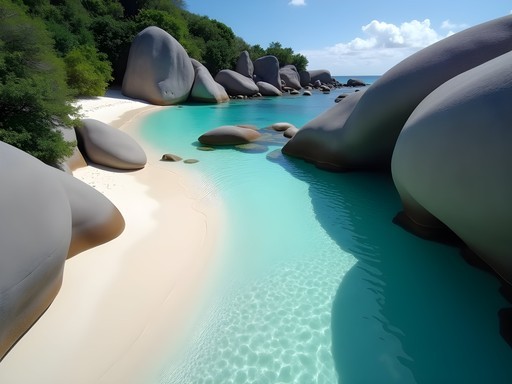

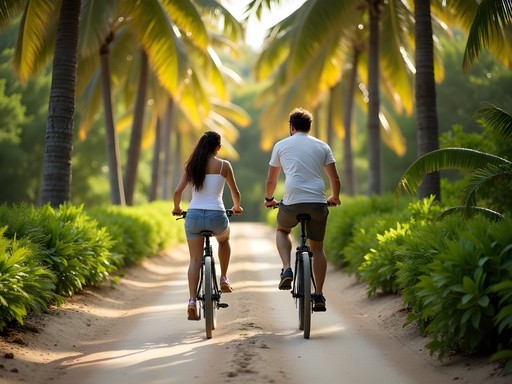




Comments
Gregory Boyd
Excellent guide, Riley. Having visited La Digue four times over the past decade, I've seen how it's maintained its car-free charm while gradually improving accessibility. One thing worth noting is the quality of rental bikes varies enormously between vendors. The ones at the jetty tend to be pricier but better maintained. I recommend using bike locks if you bring your own - while crime is rare, it's better to be safe when you park at remote beaches. The walking path to Anse Cocos remains my favorite journey on the island - it feels like discovering a secret paradise every time.
skyguy
Are the bikes hard to ride in the heat?
islandchamp
Not OP but when I went last year it was hot but totally worth it! Just go early morning or late afternoon and bring water!
Riley Griffin
What @islandchamp said! Morning rides are magical, and there's usually a nice breeze. Most of the island is pretty flat too, except for the hills toward Grand Anse.
Ahmed Greene
Riley, this brings back such memories! My wife and I visited La Digue last year, and the car-free atmosphere was absolutely magical. We spent three days just cycling everywhere, and it was the most peaceful part of our Seychelles trip. One tip I'd add - don't miss cycling to Grand Anse beach during low tide. The road gets a bit rough near the end, but the journey through the vanilla plantations is worth it. Also, bring plenty of water for longer bike rides - the tropical heat can sneak up on you!
Riley Griffin
Thanks Ahmed! Great tip about Grand Anse - we did that ride and you're right about the water. Zoe went through two bottles before lunch!
sunsetgal
OMG I'm literally planning a trip to Seychelles right now! This is perfect timing!
Claire Hawkins
Riley, this brought back such wonderful memories! We visited with our 4 and 6 year old last spring, and they still talk about 'the island with no cars.' We rented bikes with child seats which worked perfectly. One thing families might want to know - some of the bike rental places have limited kids' bikes, so booking ahead is smart if you have older children who can ride themselves. The gentle pace of life there is exactly what more destinations should aspire to!
explorequeen
Claire, did you find it easy to navigate with kids? Planning a trip with my 5-year-old and wondering if it's doable!
Claire Hawkins
Absolutely doable! The pace is slow, distances are short, and there are plenty of shady spots to rest. Just bring lots of water, snacks, and sun protection. My kids loved the freedom from cars - they could actually walk around without me clutching their hands in panic!
skyfan
OMG those photos bring back memories!! La Digue is PARADISE! The no-cars policy makes it feel like you've stepped back in time. Best decision ever to spend 3 days there!
wanderlustmaster7387
Just got back from La Digue last month and this post is spot on. One tip I'd add: bring a good waterproof phone case if you're cycling during rainy season. Those tropical downpours come out of nowhere! Also, the ox-cart ride feels touristy but it's actually a great way to get oriented when you first arrive. Our driver pointed out so many hidden spots we would've missed otherwise.
wildfan
Great post! How difficult would you say the cycling is for someone who's not super fit? And are there any hills that are just too steep to bike?
Riley Griffin
Great question! Most of the main areas are quite flat, but heading to Grand Anse and Petit Anse has some challenging hills. Many visitors (myself included!) end up walking their bikes up certain sections. No shame in that! The bikes typically have just 1-3 gears, so they're not exactly built for mountains.
wandermate
La Digue was the highlight of our Seychelles trip last year! The bicycle rental shops right at the jetty are super convenient, but they get busy fast. We learned to grab bikes early in the morning. The hills can be a bit challenging in the heat, but the freedom to explore at your own pace is worth it. And those ox-carts are such a charming throwback - my kids were obsessed!
Riley Griffin
Thanks for sharing! You're right about those morning bike rentals - it gets competitive! Did your kids have any favorite spots on the island?
wandermate
Anse Source d'Argent was magical for them! The shallow water and those massive boulders were like a natural playground. Well worth the entrance fee to L'Union Estate.
Frank Carter
Riley, this brought back so many memories! My wife and I spent a week on La Digue in 2023, and that car-free environment truly makes it magical. One tip for readers: bring a good waterproof bag for your bike adventures. We got caught in a sudden tropical downpour cycling back from Grand Anse and everything got soaked! The ox-carts were such a charming surprise - we initially thought they were just for tourists, but seeing locals use them for actual transport was fascinating. Did you notice how the pace of life just naturally slows down when cars aren't around? We found ourselves completely resetting our internal clocks by day 3. No rushing, just island time.
BeachDreamer92
Those sudden rain showers are no joke! We got caught in one near Anse Source d'Argent. Dried off in about 10 minutes though with that Seychelles heat!
Frank Carter
Exactly! It's part of the adventure. Those quick tropical showers followed by brilliant sunshine make for some amazing rainbow photo ops too.
Venture X
Premium card with 2X miles, $300 travel credit, Priority Pass